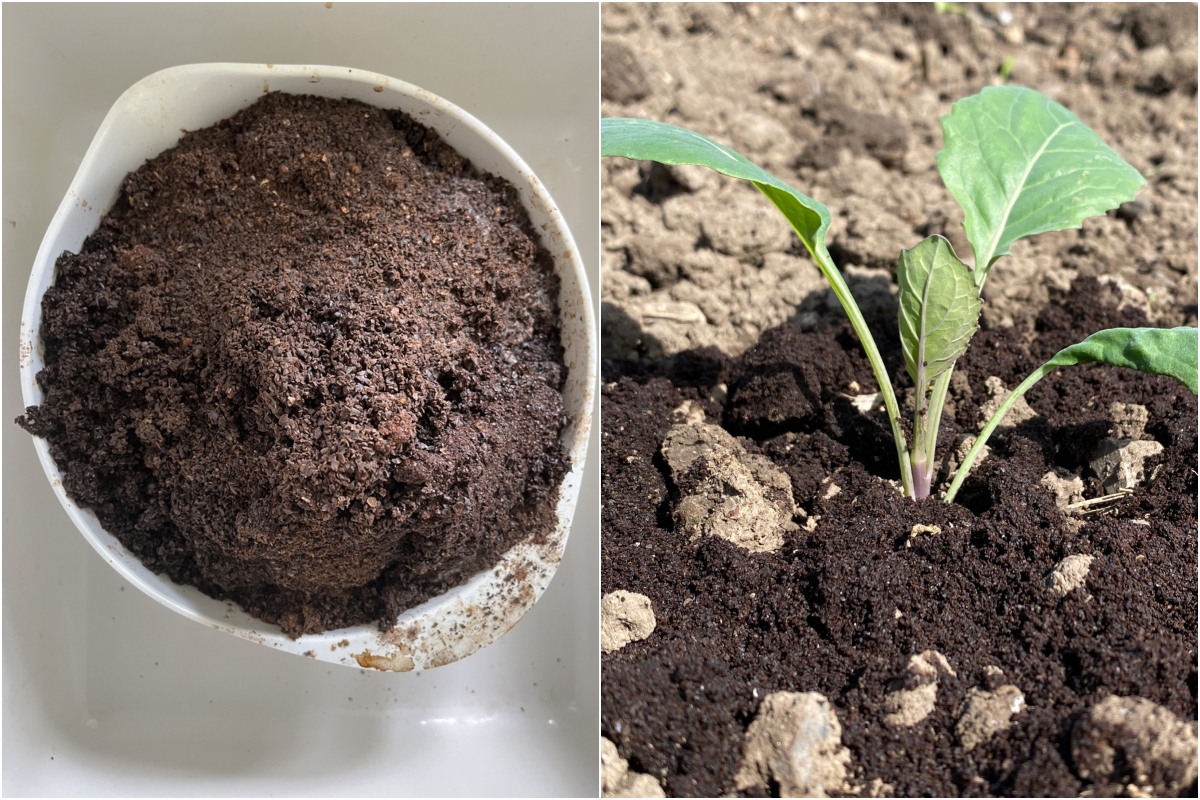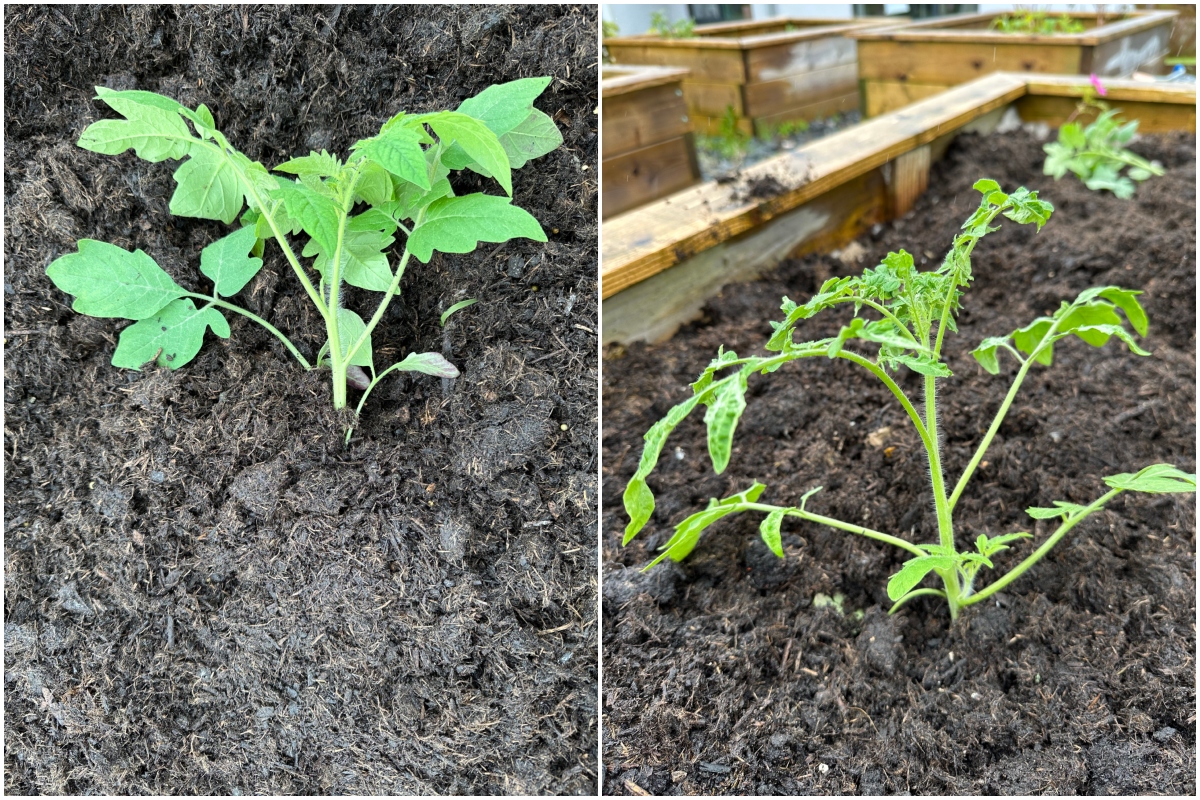
Okay, folks, are you ready to get down and dirty? (I mean, we’re gardeners; it’s what we do.) Today, we’re going to settle a debate that has been rumbling around as long as we’ve been cultivating tomatoes.
Which is better – planting tomatoes deeply or planting tomatoes sideways?
Put your garden gloves on, and let’s dig in.
Growing Tomatoes – Guesswork and Gardening
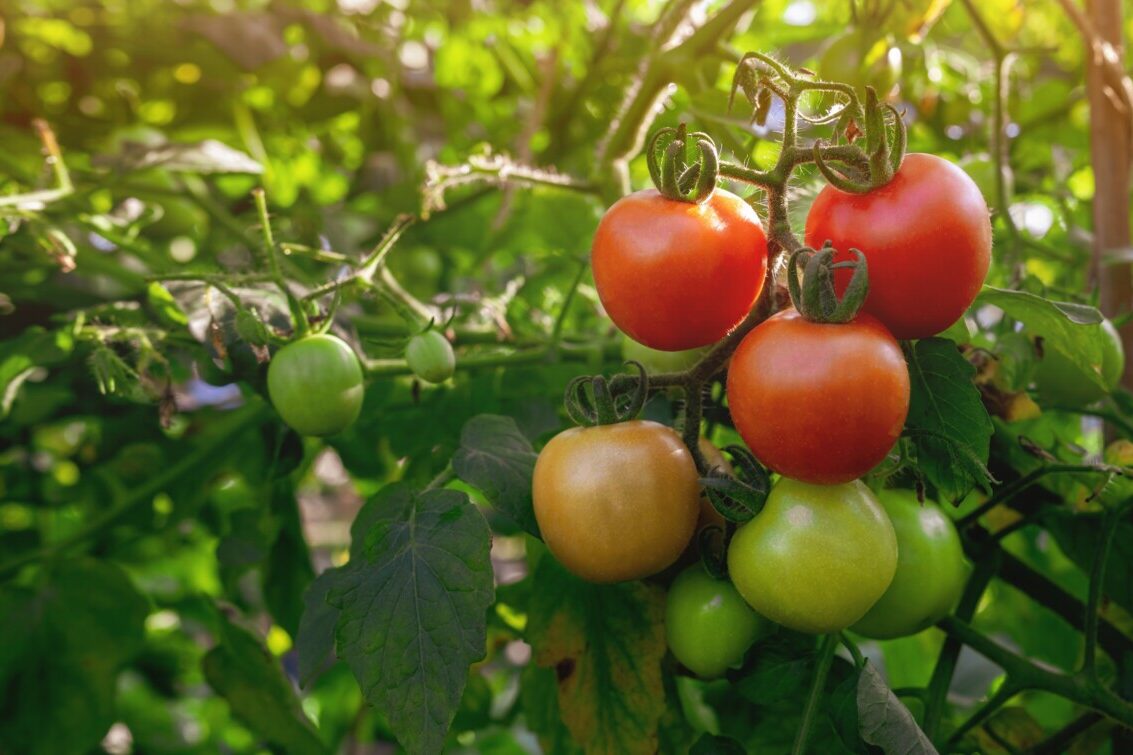
Gardening is confusing.
It seems pretty straightforward. You poke seeds in the dirt. You water them. The sun shines on them. They grow.
Except it never goes that smoothly.
Between battling the elements, waging war against all manner of bugs and diseases and the mystery of what’s going on below the soil, gardening involves a lot of guesswork.
You figure we’ve been cultivating and breeding tomatoes for around 7,000 years – that’s a whole lot of guesswork surrounding tomatoes specifically.
And that’s the inherent problem with the majority of gardening advice out there. Most of it is anecdotal, passed from one green thumb to the next with no real proof of whether or not it works.
But when it comes to growing tomatoes, there is one piece of gardening wisdom that’s been proven to work over and over again – If you bury part of the stem, the plant will put out more roots, giving it a more robust root system.
When it comes to tomatoes, a more robust root system is a good thing.
Wild Tomatoes Hold the Key to Big Harvests in Their Garden-Variety Cousins
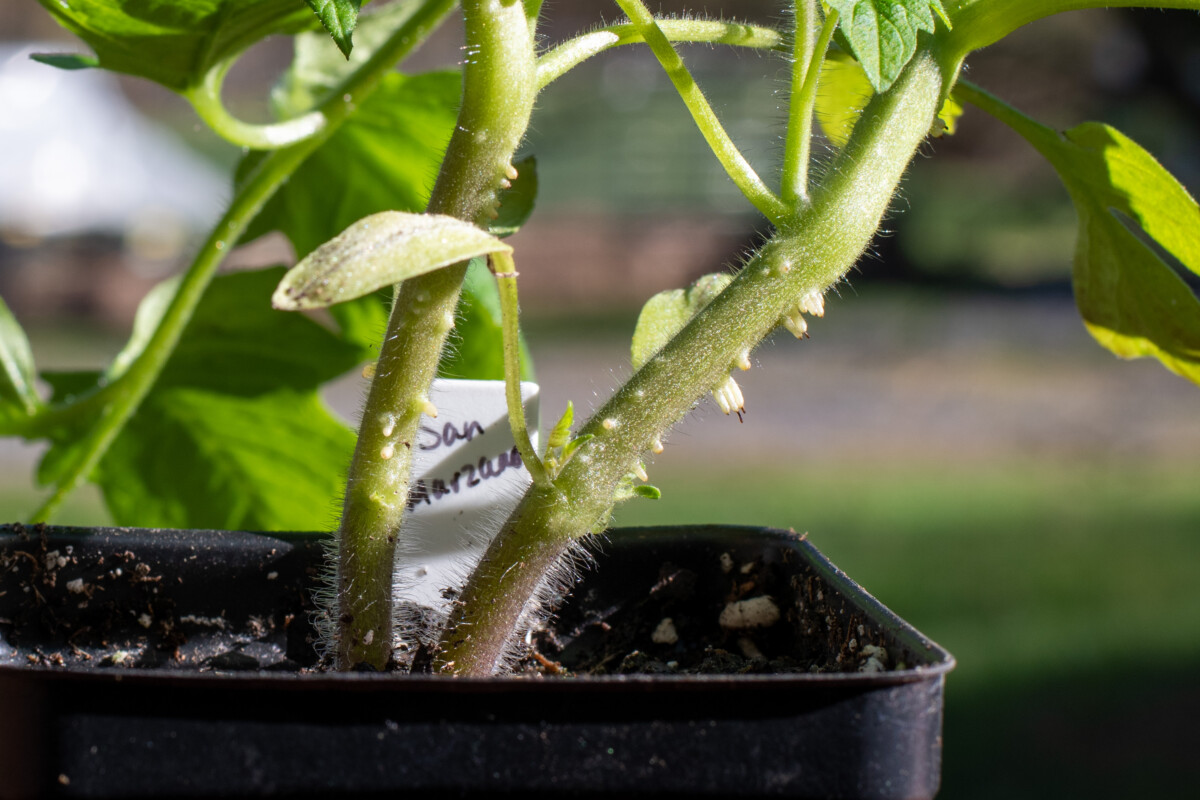
The world’s most popular veggie is a heavy feeder. Not only do tomatoes require extra water, but extra nutrients if you want them to produce a large harvest. (We do! We do!)
But the problem is, in our desire to grow the juiciest, most flavorful tomatoes, we’ve taken away one of the benefits tomatoes have in the wild – growing on the ground.
They’re able to do this through the use of adventitious roots, or root primordia.
To get a good idea of how it works, it helps to look at where our garden tomatoes’ wild ancestors grow in their native South America. The tomato hails from the Andes Mountains, where it grows as a creeping vine.
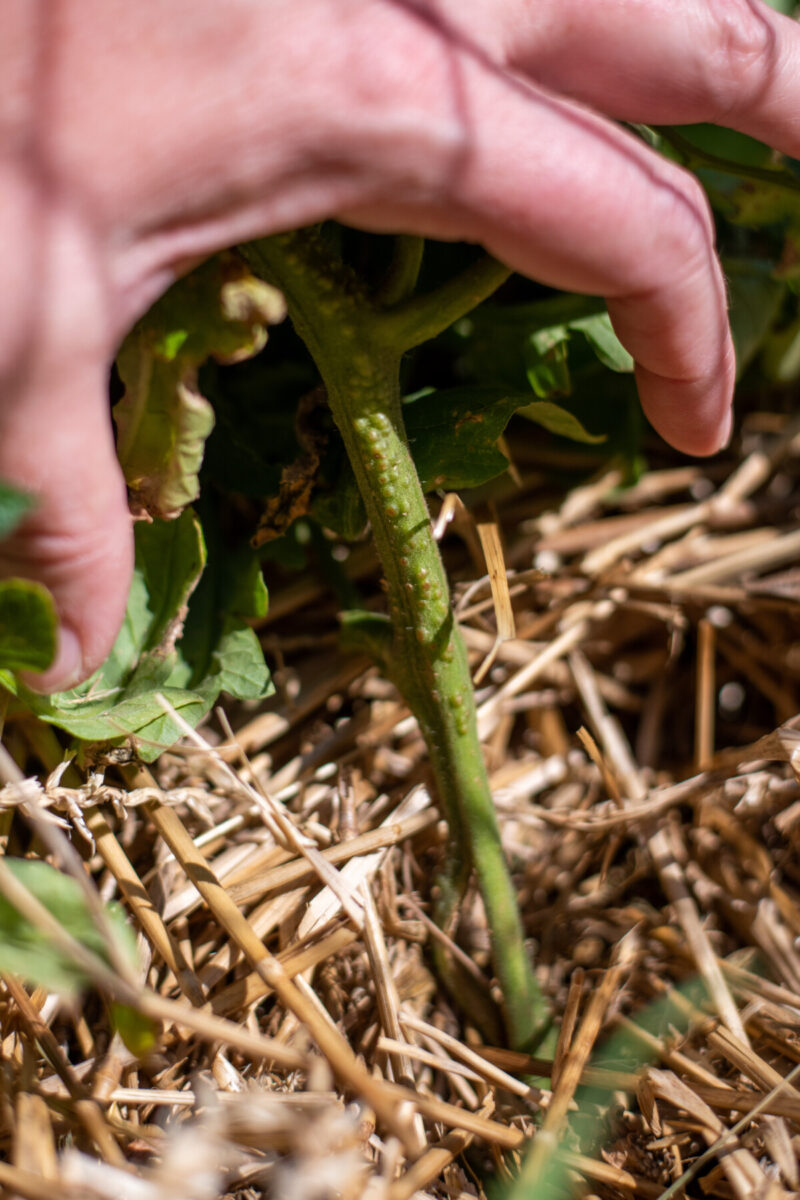
Wherever the stem touches the soil, special cells called parenchyma cells just below the surface of the epidermis begin to divide and grow into new roots. As these wild tomatoes grow along the ground, they continually add new smaller root systems along the length of the vine, which allows the plant more access to water and nutrients.
Since we’ve cultivated the toughness right out of tomatoes, we can’t grow ours on the ground without disease or pests taking over. We have trained our tomatoes to grow up. So, our garden tomatoes are stuck with only the roots at their base to provide them with all they need.
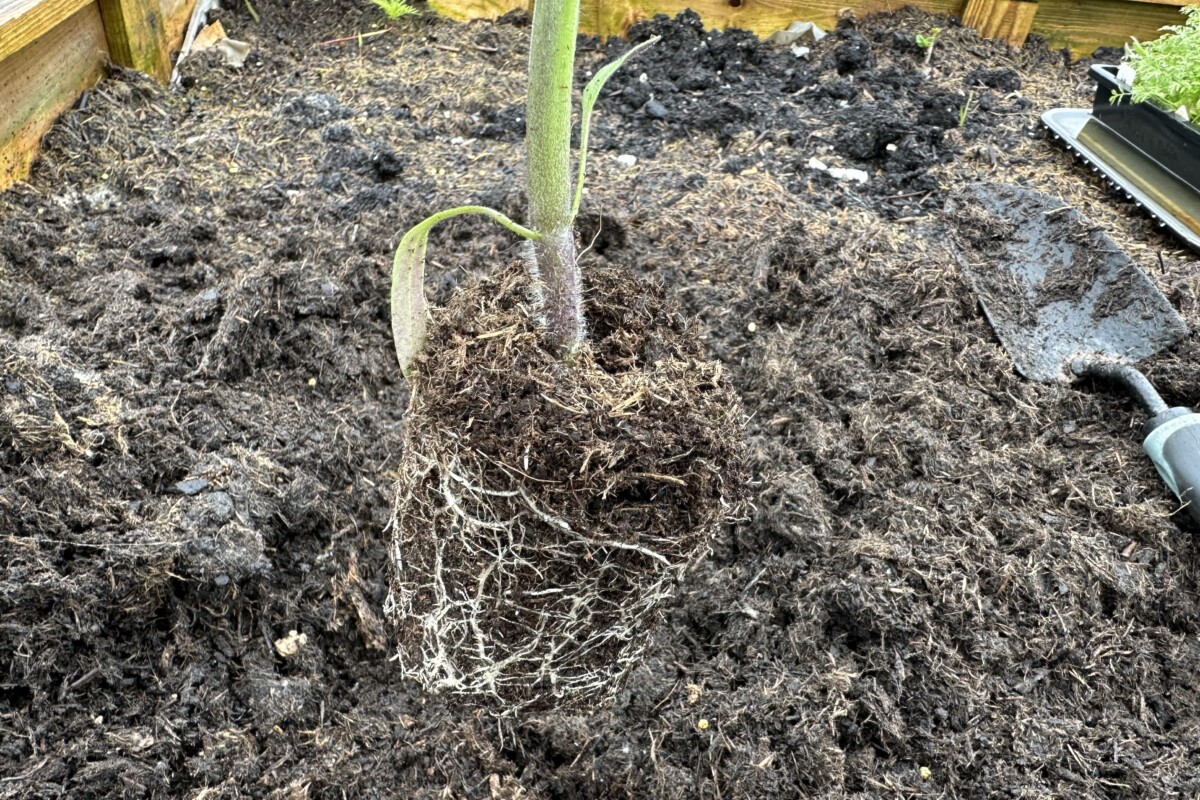
Remember, a plant will only grow as large as its root system can support.
Somewhere along the way, a smart gardener realized that by burying the tomato stem, you’ll get a much larger root system and a plant that can support a whole lot more fruit. I would assume burying them sideways came from the notion that it’s a vine, so it would make sense to bury it lengthwise. I haven’t been able to figure out where the original idea came from.
I’ve written up an in-depth look at why this process works so well. I also walk you through how to do it, with step-by-step instructions for both determinate and indeterminate tomatoes. (The process is different depending on which variety you’re growing.) If you’re unfamiliar with trenching tomatoes, it’s a good read.
Read here: Plant Tomatoes Sideways or Bury Deeply – The Secret To Huge Harvests
And the rest, as they say, is history.
Except we’re gardeners. We’re never satisfied. If someone comes up with a new trick, we’re going to fiddle with it to see if we can make it better. And that’s where our debate comes in. Yes, burying a portion of the tomato stem below the soil is good, but which is better – sideways or deeply?
I’m just going to come right out and say it.
Deep Tomatoes – More Than Just a Cool Band Name
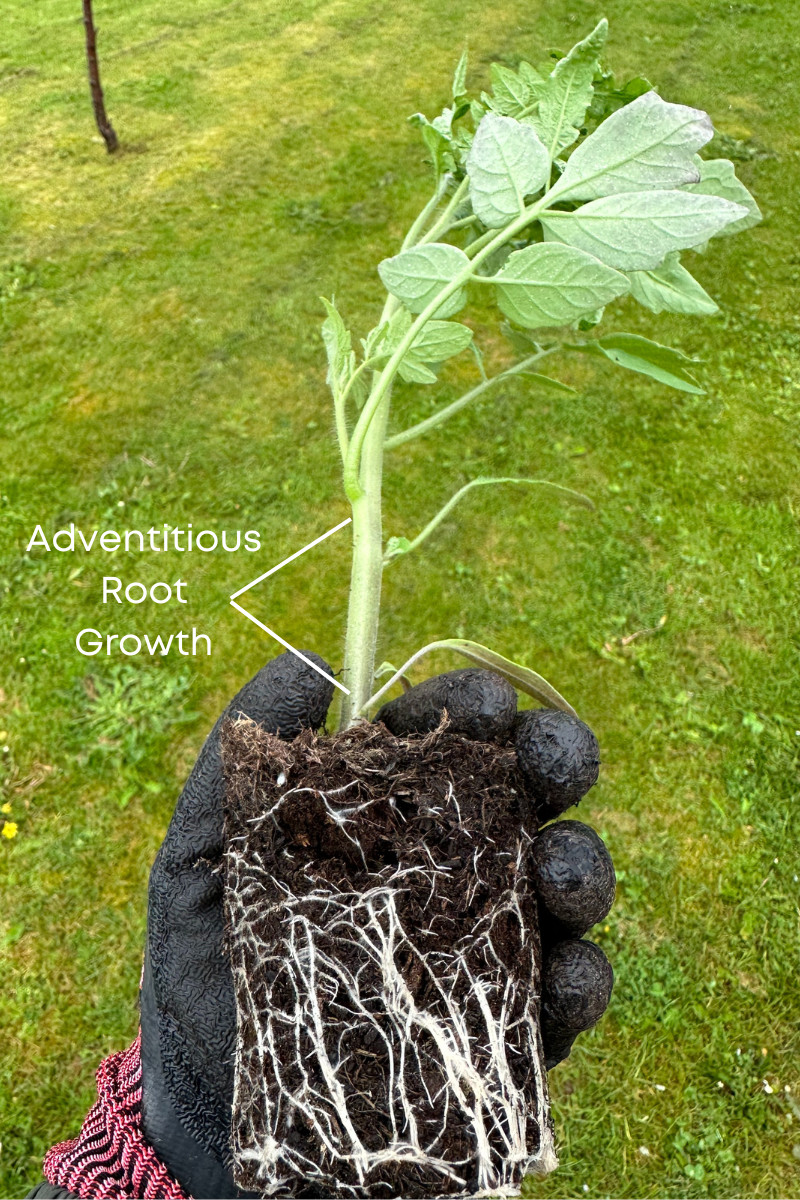
It does sound like a band name, right? Opening for the Foo Fighters is Deep Tomatoes! But in all seriousness, it’s also the best way to plant tomatoes to enjoy the benefits of adventitious root growth. (I also might be slightly biased because it’s how I plant my tomatoes.) But I’m willing to put my tomatoes where my mouth is. Because they’re delicious.
Burying tomatoes deeply is the way to go and will give you the best results.
In the end, both methods give you the same result – a larger root system and, ultimately, a healthier plant with a bigger harvest. However, there are some clear disadvantages to trenching tomatoes sideways.
And Then It All Went Sideways
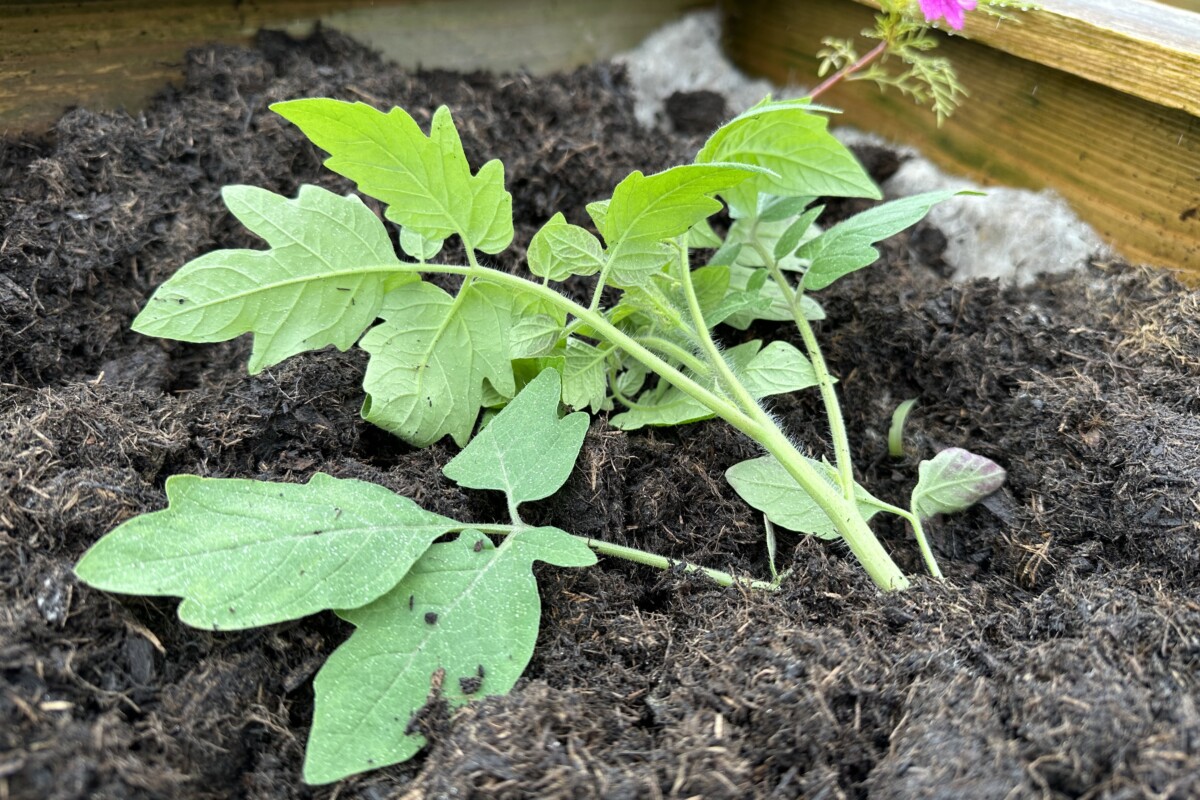
If you plant tomatoes sideways, you’ll certainly end up with adventitious root growth, which is what you want. The problem is most of your new root growth is only a few inches below the soil surface.
Guess where most of the water and nutrients are in the soil?
Yep, deep in the ground.
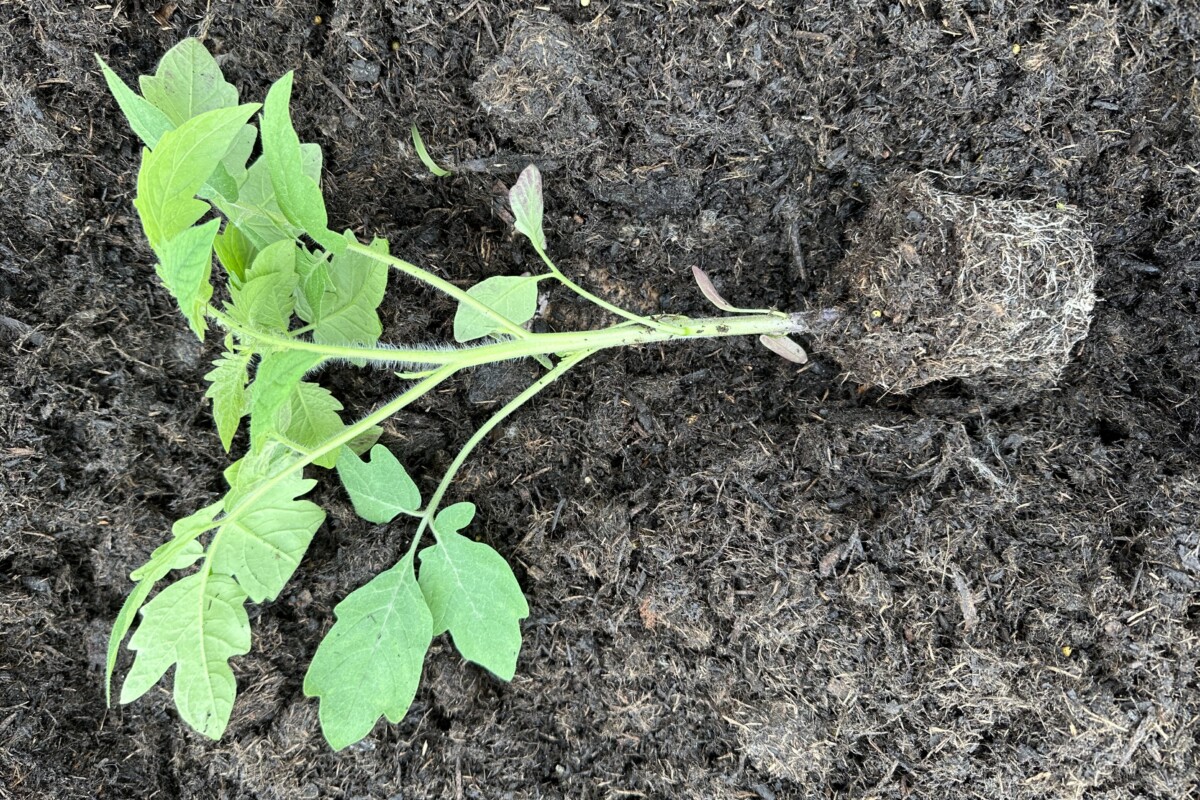
This is why deep, infrequent watering is suggested rather than more frequent watering. When you allow plants to dry out between watering, it forces them to send roots much deeper into the soil in search of water and nutrients. You end up with tougher plants that are more drought-tolerant.
Unfortunately, trenching tomatoes sideways means the plant will dry out faster and may have a harder time getting access to nutrients. This means you’ll have to water them more frequently, which means they won’t send roots deeper in search of water and will dry out faster and…
You can see the vicious cycle that ensues.
It takes a bit more practiced care to tend to a plant with shallow roots while still trying to get it to push those roots down further in the ground.
In the end, it’s much easier to start by burying your tomato plant deeper in the soil. The roots will already be further below the soil than normal and have a much shorter distance to travel to tap into the nutrients and water deep in the ground.
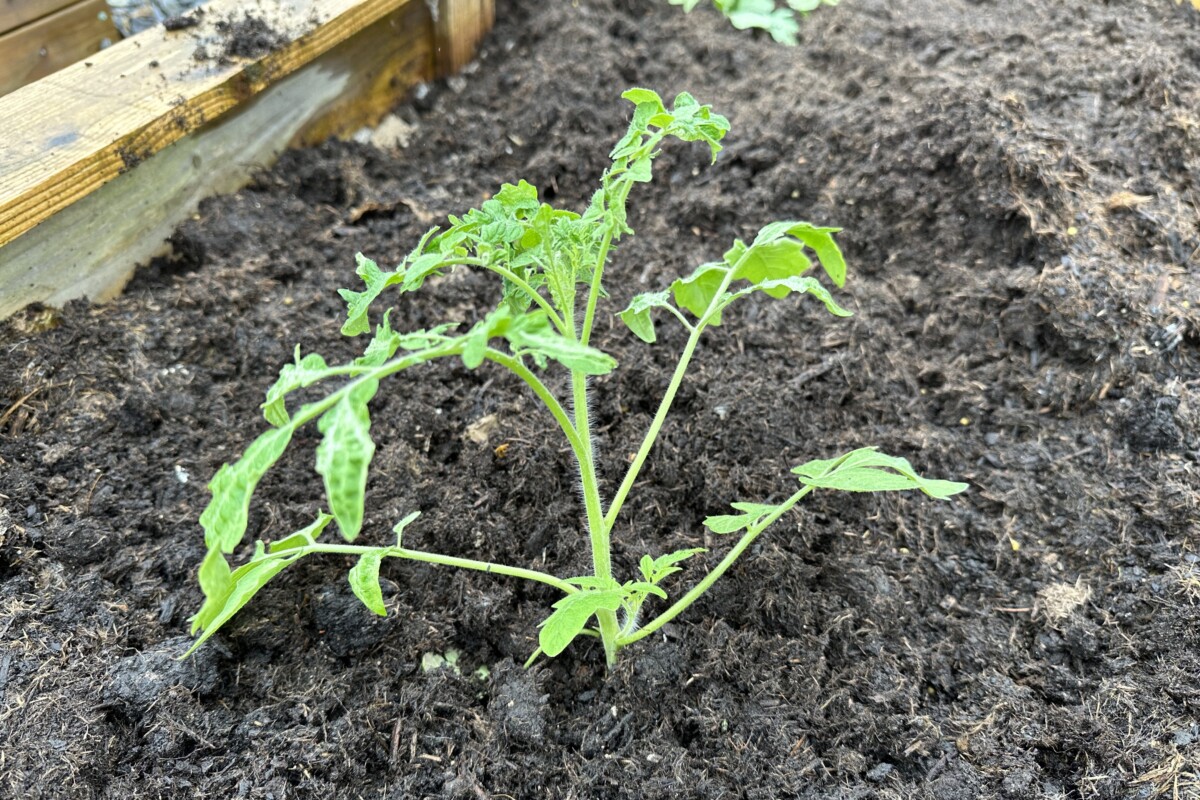
Determinate Tomatoes Miss Out on All the Fun
Determinate tomatoes tend to have thicker stems as they’re not vining like an indeterminate tomato. This means they’re less flexible and more prone to breaking if you try to bend them by burying them sideways and training the plant above ground to grow straight up again.
Determinate tomatoes set all their fruit around the same time, too. This means the plant gets pretty heavy. If it doesn’t have a sturdy anchor in the ground (like a crooked stem), it can snap under its own weight.
Determinate tomatoes will do better being buried deeply rather than trenched on their sides.
Oops, Excuse Me; I Didn’t See You There
The other issue with planting sideways is space. When you plant tomatoes deep in the ground, you have the plant above ground to help demarcate where the roots are. Planting sideways means you have always to be mindful of where the stem is. Be careful if you plan on using tomato cages or some other form of staked support. You don’t want to stab through your sideways tomato stem accidentally.
If you want to plant crops near your tomatoes (and you should; we’ve got a list of companion plants that like to snuggle up close to tomatoes), then you’re limited as to where you can plant them because you’ve got a sideways stem underground that you have to plant around.
Start As You Mean to Continue
Burying tomatoes deeply will give you all the advantages of adventitious root growth without all the problems from planting tomatoes on their sides.
Of course, I’m a firm believer that you should start as you mean to continue, so you can get a jump on growing extra roots by using my secret (okay, half the Internet knows my secret now) tomato potting up method.
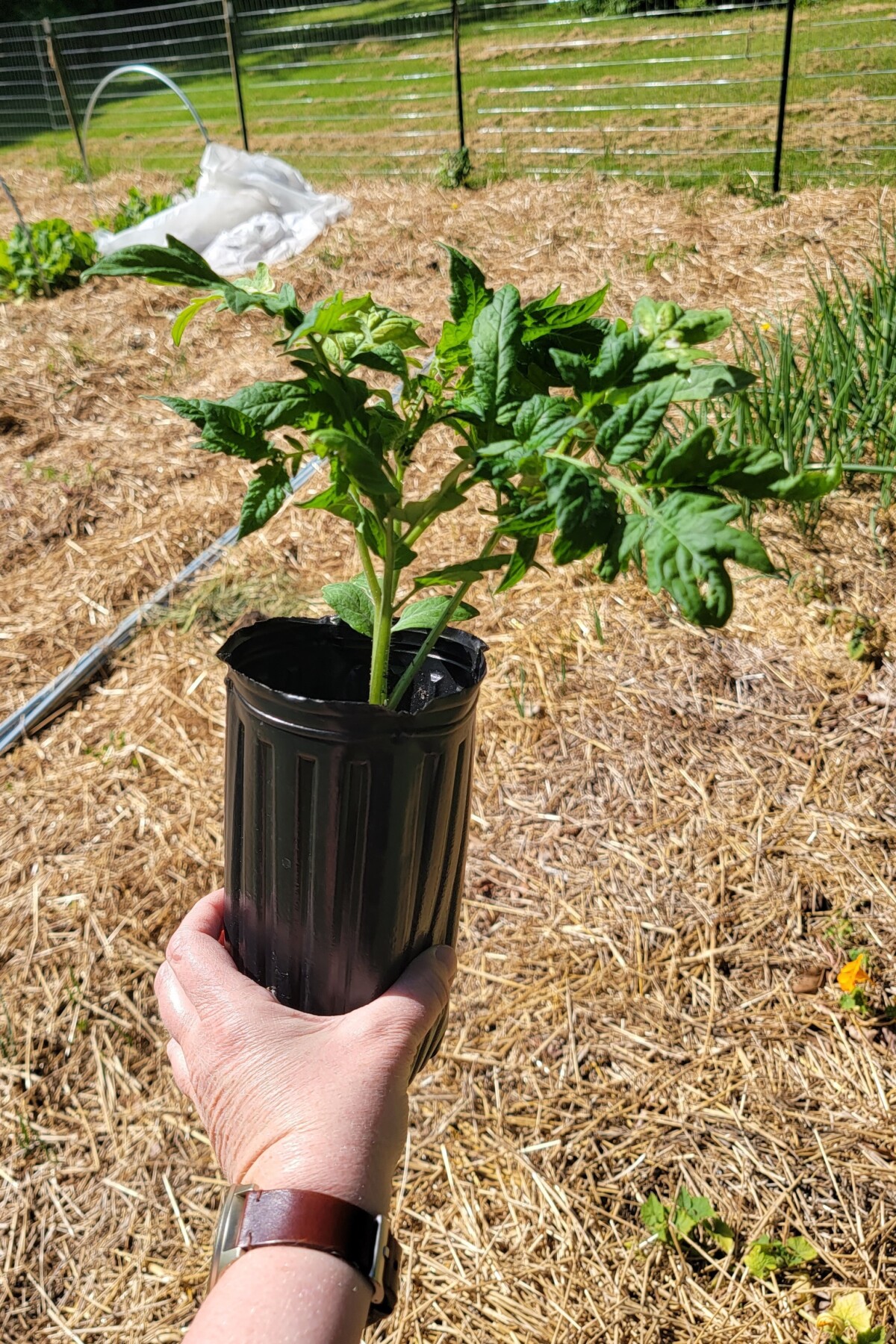
And if you’re looking for all the benefits that come along with adventitious root growth then you really ought to be using mycorrhizae when you do plant your tomatoes nice and deep in the garden or their pots.
Mycorrhizae are beneficial fungi that attach themselves to the roots of plants and act as a whole other secondary root system.
Mycorrhizae can increase the surface area of your plant’s root system significantly, meaning your plants have a much easier time getting water and nutrients. And these beneficial fungi also “predigest” nutrients in the soil, taking nutrients that are locked away in the soil and making them readily available to your plants.
You can read about the many benefits of using mycorrhizae with your plants. 90% of the world’s plants rely on this symbiotic relationship with naturally occurring fungi in the soil, so make sure your garden plants aren’t missing out.
How to Plant Tomatoes Deeply
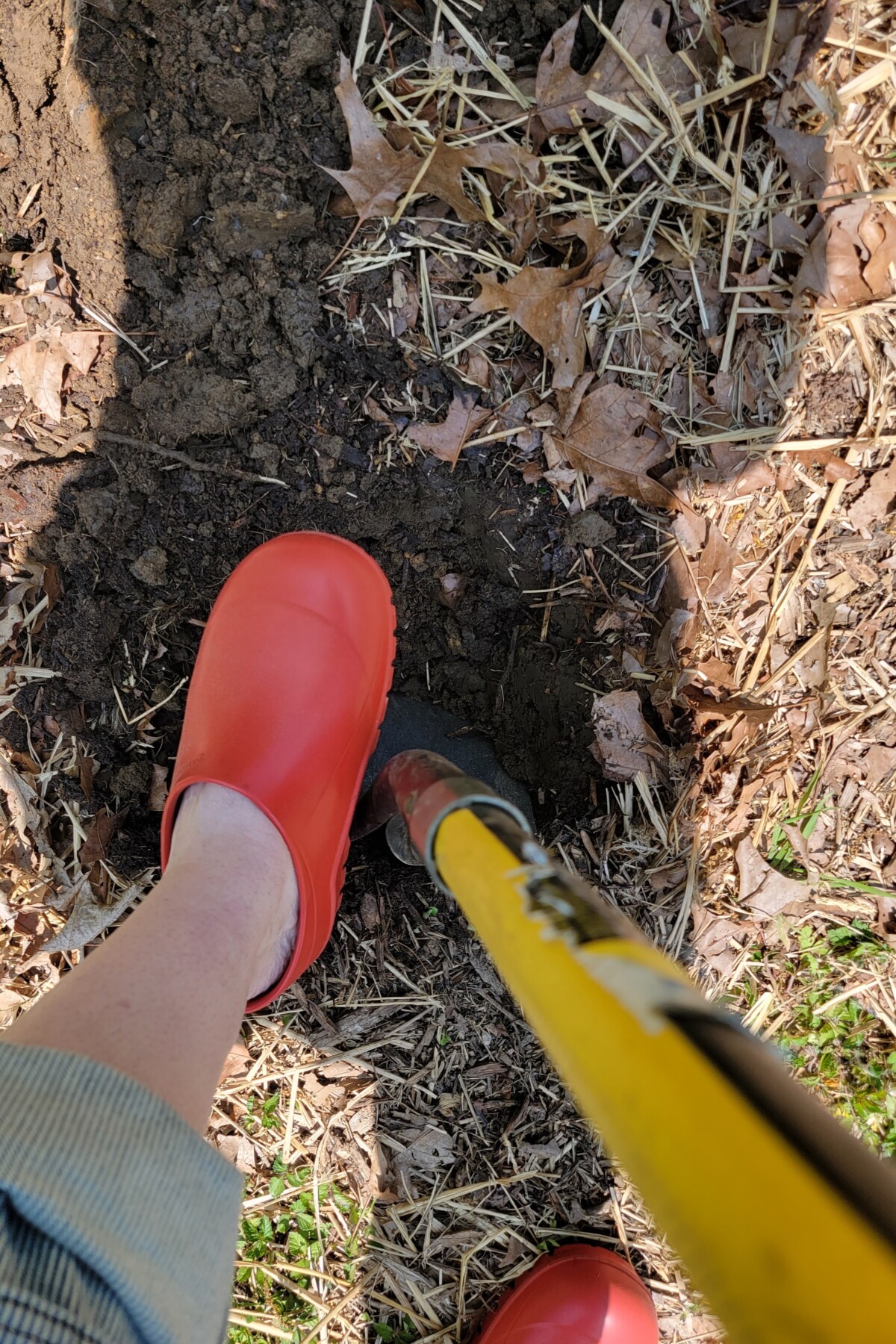
Again, I highly encourage you to read “Plant Tomatoes Sideways or Bury Deeply – The Secret To Huge Harvests” for step-by-step instructions on how to plant tomatoes deeply. But if you’re in a hurry, here’s the quick-start guide.
- Prune leaves and lower stems from your plant a third to halfway up from the bottom of the plant.
- Let the plant scab over for a day or two.
- Dig a hole deep enough for the plant to sit in it just past a third or half of the stem length + another few inches.
- Loosen the dirt in the bottom of the hole to make it easier for the roots to penetrate deeply.
- Add a few trowels of compost to the bottom of the hole.
- Place your tomato plant in and backfill the hole, packing the dirt snuggly around the plant as you do.
- Water your tomato deeply.
Don’t be surprised if not much happens for a week or two. The plant will be busy putting out new roots below ground; then, suddenly, it will take off above ground. Remember, water thoroughly but less frequently. Once the growing season is underway, you’ll find you don’t have to water as often.
And that’s that. Now, what other gardening debates should we settle?

Get the famous Rural Sprout newsletter delivered to your inbox.
Join the 50,000+ gardeners who get timely gardening tutorials, tips and tasks delivered direct to their inbox.



